Electronics News
Archive : 18 August 2015 год
 Tektronix has expanded its AFG3000C Arbitrary/Function Generator Series with two 150MHz models that are claimed to deliver more performance than competitive offerings.
Tektronix has expanded its AFG3000C Arbitrary/Function Generator Series with two 150MHz models that are claimed to deliver more performance than competitive offerings.
Slotting between existing 100 and 240MHz models in the Tektronix AFG3000C line-up, the AFG3151C and AFG3152C are said to deliver 25% more bandwidth and 59% more output zone with ±5Vdc offset. The AFG3000 Series also feature a user interface that is claimed to show more information at a single glance, which helps boost productivity by allowing users to focus more on the task at hand.
Michael Ewald, general manager, Bench Products Division at Tektronix said: "We are giving our customers more options to select the appropriate bandwidth level for their signal generation needs while also lowering their costs compared to other alternatives on the market."
Current complex designs require a variety of stimulus signals during test. The AFG3000C Series include 12 standard waveforms, arbitrary waveform capability, and signal impairment options to support a range of application needs with one instrument. Included ArbExpress software allows waveforms to be created from any Tektronix oscilloscope, or defined by standard functions, equation editor and waveform math.
Author
Tom Austin-Morgan
Source: www.newelectronics.co.uk
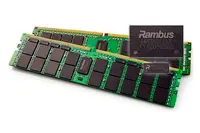 Rambus is adding fabless semiconductor company to its list of capabilities with the launch of the R+ DDR4 server memory chipset. The offering is said to bring better performance and capacity to enterprise and data centre applications.
Rambus is adding fabless semiconductor company to its list of capabilities with the launch of the R+ DDR4 server memory chipset. The offering is said to bring better performance and capacity to enterprise and data centre applications.
The RB26 will be the first in a family of R+ chips. JEDEC compliant, the memory module chipset is designed to accelerate data intensive applications, including real time analytics, virtualisation and in memory computing.
"The introduction of this chipset is a natural progression that enables us to deliver maximum value to the industry," said Dr Ron Black, president and CEO. "Expanding our offer beyond IP into chips with standards based offerings that feature leading edge performance and advanced functionality amplifies our growth strategy and furthers our engagement with the market."
The RB26, which includes a DDR4 register clock driver and data buffer, runs at 2.67Gbit/s and Rambus says there is built in support for future data rates.
Author
Graham Pitcher
Source: www.newelectronics.co.uk
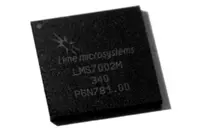 Lime Microsystems and Airbus Defence and Space, with funding from Innovate UK, have announced a joint development of robust Global Navigation Satellite System (GNSS) products. Airbus D&S, using Lime's Field Programmable RF (FPRF) transceiver technology, is developing a robust timing receiver that exploits signals from the Galileo satellite navigation constellation.
Lime Microsystems and Airbus Defence and Space, with funding from Innovate UK, have announced a joint development of robust Global Navigation Satellite System (GNSS) products. Airbus D&S, using Lime's Field Programmable RF (FPRF) transceiver technology, is developing a robust timing receiver that exploits signals from the Galileo satellite navigation constellation.
It is envisaged that a highly integrated FPRF solution based on Lime's technology and an innovative system implementation of the kind provided by Airbus D&S will provide a high performance GNSS product with the potential for integration with other wireless capabilities.
Mike Turner from Airbus D&S said: "Lime FPRF transceiver matches our rigorous technical performance requirements and we are looking forward to working alongside Lime in this strategic engagement".
Ebrahim Bushehri ceo of Lime Microsystems said: "We are delighted to be working with Airbus, supporting a complimentary technology that could impact a variety of applications such as wireless infrastructure".
The GNSS is Europe's version of the Russian GLONASS and the US GPS systems. Created by the European Union and the European Space Agency, the project cost 5billion Euros and can be run independently in the event of other countries disabling their satellite positioning systems.
Author
Tom Austin-Morgan
Source: www.newelectronics.co.uk
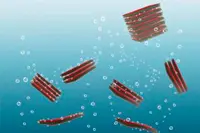 Drexel University researchers are testing combinations that may create faster, smaller, more efficient energy storage, advanced electronics and wear-resistant materials.
Drexel University researchers are testing combinations that may create faster, smaller, more efficient energy storage, advanced electronics and wear-resistant materials.
Led by postdoctoral researcher Babak Anasori, PhD, a team from Drexel's Department of Materials Science and Engineering created a material-making method that can sandwich 2D sheets of elements that otherwise couldn't be combined in a stable way.
"By 'sandwiching' one or two atomic layers of a transition metal like titanium, between monoatomic layers of another metal, such as molybdenum, with carbon atoms holding them together, we discovered that a stable material can be produced," Anasori said. "It was impossible to produce a 2D material having just three or four molybdenum layers in such structures, but because we added the extra layer of titanium as a connector, we were able to synthesise them."
The discovery represents a way of combining elemental materials to form the building blocks of energy storage technology such as batteries, capacitors and supercapacitors, as well as superstrong composites. The researchers suspect that one, or more, of these new materials will exhibit energy storage and durability properties so disproportional to its size that it could revolutionise technology in the future.
Combining two-dimensional sheets of elements in an organised way to produce new materials has been the goal of Drexel Nanomaterials researchers for more than a decade. Imposing this sort of organisation at the atomic level is no easy task.
But Drexel researchers have devised a way to circumvent this challenge. A material called MAX phase, which was discovered by Distinguished Professor Michel W. Barsoum, PhD, head of the MAX/MXene Research Group, more than two decades ago. It is said that all the elements of the finished product are in the MAX phase, waiting for the researchers to impose some order.
That order was imposed by Barsoum and Yury Gogotsi, PhD, head of the Drexel Nanomaterials Group, when they first created a stable, 2D layered material called MXene in 2011.
To create MXenes, the researchers selectively extract layers of aluminium atoms from a block of MAX phase by etching them out with an acid.
"Think of MXene synthesis like separating layers of wood by dunking a plywood sheet into a chemical that dissolves the glue," Anasori said. "By putting a MAX phase in acid, we have been able to selectively etch away certain layers and turn the MAX phase into many thin 2D sheets, which we call MXenes."
Prior to the discovery of MXenes, graphene was the first 2D material to be touted for its potential energy storage capabilities. But, as it was made up of only one element, graphene was difficult to modify in form and therefore had limited energy storage capabilities. The new Mxenes are said to have surfaces that can store more energy.
Drexel's team knows that, in principle, it can use this method to make as many as 25 new materials with combinations of transition metals, such as molybdenum and titanium that previously wouldn't have been attempted.
Anasori plans to make more materials by replacing titanium with other metals, such as vanadium, niobium, and tantalum, which could unearth a vein of new physical properties that support energy storage and other applications.
Author
Tom Austin-Morgan
Source: www.newelectronics.co.uk
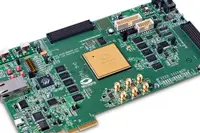 Microsemi has launched the RTG4 FPGA development kit, described as a 'first of its kind' system that allows engineers to evaluate the use of the RTG4 radiation tolerant FPGA in applications such as data transmission, serial connectivity, bus interface and high speed designs.
Microsemi has launched the RTG4 FPGA development kit, described as a 'first of its kind' system that allows engineers to evaluate the use of the RTG4 radiation tolerant FPGA in applications such as data transmission, serial connectivity, bus interface and high speed designs.
Minh Nguyen, Microsemi's senior marketing manager for space and aviation, said: "In addition to Microsemi's commitment to the space industry, this new development kit affirms our dedication to providing evaluation and development solutions to help designers successfully leverage our latest technologies."
An early user of the kit was UK based space company STAR-Dundee. Its managing director Professor Steve Parkes said: "We took advantage of RTG4's embedded SpaceWire clock recovery circuits and high speed SERDES capabilities to quickly demonstrate our SpaceWire IP running at more than 200Mbit/s and our next generation SpaceFibre IP at running at 2.5Gbit/s using [the] kit."
The kit features an RT4G150 in a ceramic package with 1657 pins, two 1Gbyte DDR3 SDRAMs and 2Gbyte of SPI flash. Along with a range of connectors, the kit has an RJ45 interface for 10/100/1000 Ethernet and an embedded Flashpro5 programmer and external programming header. A range of demonstration guides and tutorials are also available.
Author
Graham Pitcher
Source: www.newelectronics.co.uk
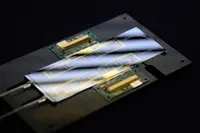 Researchers from the University of Bristol and NTT in Japan have developed an optical chip that can process photons in an infinite number of ways. According to the team, the fully reprogrammable chip marks a 'new era of research' for scientists and engineers at the cutting edge of quantum technologies.
Researchers from the University of Bristol and NTT in Japan have developed an optical chip that can process photons in an infinite number of ways. According to the team, the fully reprogrammable chip marks a 'new era of research' for scientists and engineers at the cutting edge of quantum technologies.
Dr Anthony Laing, who led the project, said: "A whole field of research has essentially been put onto a single optical chip that is easily controlled. The implications of the work go beyond the huge resource savings. Now anybody can run their own experiments with photons, much like they operate any other piece of software on a computer. They no longer need to convince a physicist to … painstakingly build and conduct a new experiment."
The team demonstrated the chip's capabilities by reprogramming it to perform a number of experiments, each of which would previously have taken many months to build.
Bristol PhD student Jacques Carolan, one of the researchers, added: "Once we wrote the code for each circuit, it took seconds to reprogram the chip and milliseconds for the chip to switch to the new experiment. We carried out a year's worth of experiments in a matter of hours. What we're really excited about is using these chips to discover new science that we haven't even thought of yet."
Author
Graham Pitcher
Source: www.newelectronics.co.uk

